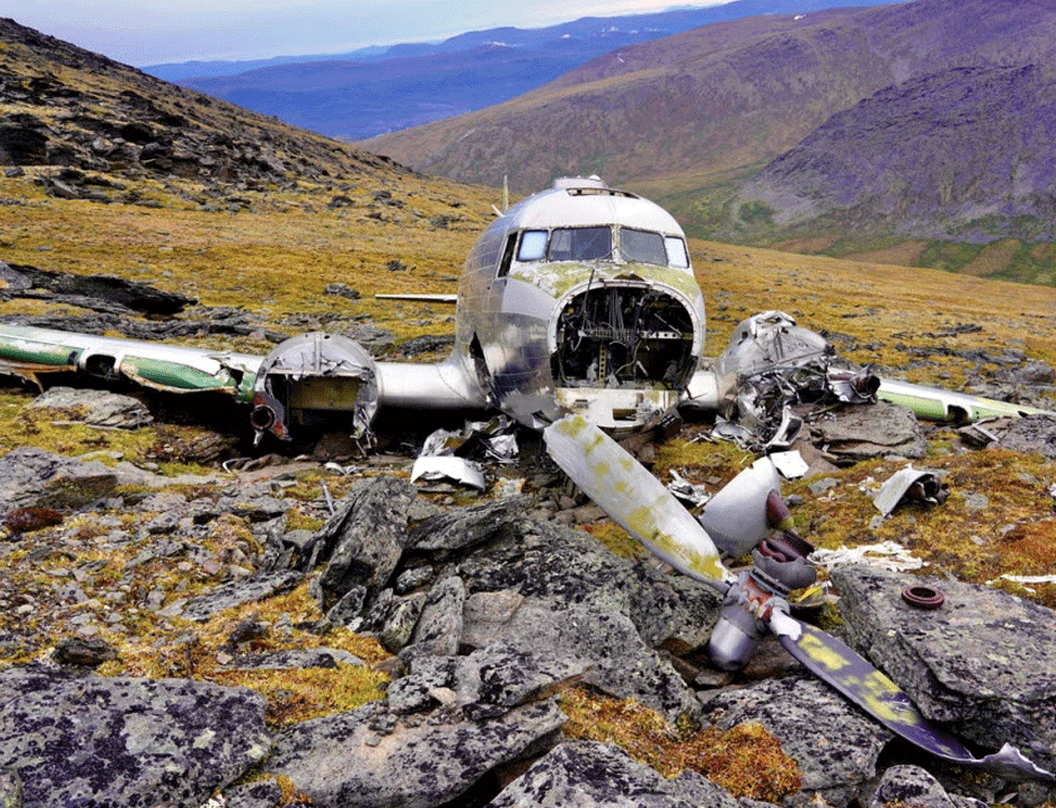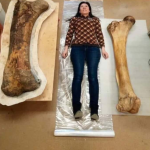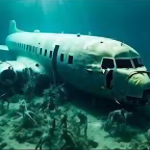Disappeared with No Clues: The Evolving Enigma of the Missing Aircraft in the Northern Territory

In the early winter of 1950, a routine flight over the rugged wilderness of the Yukon Territory became one of aviation’s most enduring enigmas. A plane carrying 44 passengers and crew vanished without a trace, leaving behind a mystery that remains unsolved over 70 years later.
On January 26, 1950, the Douglas C-54 Skymaster, operated by the United States Air Force, took off from Elmendorf Air Force Base in Alaska, bound for Great Falls, Montana. The flight path took it over the remote and treacherous terrain of the Yukon, a region known for its harsh weather and unforgiving landscapes. The aircraft, a military transport plane, was well-equipped and crewed by experienced personnel. Among the 44 on board were service members and civilians, all embarking on what should have been a routine journey.

Shortly after takeoff, the plane entered the vast expanse of the Yukon wilderness. The last radio transmission from the aircraft indicated that everything was normal. Then, abruptly, all contact was lost. The plane and its passengers seemed to vanish into thin air, leaving no clues as to their fate.
The disappearance sparked one of the largest search and rescue operations in North American history. For months, teams scoured the Yukon’s frozen expanse, battling sub-zero temperatures, blizzards, and treacherous terrain. Search planes flew countless sorties, while ground teams trudged through snow-covered forests and across icy rivers. Despite the massive effort, no wreckage was found, no distress signals were detected, and no survivors emerged.

As the years passed, the mystery of the missing plane deepened. Theories abounded, ranging from mechanical failure and navigational errors to more sinister possibilities like sabotage or even abduction by extraterrestrial forces. Yet, without any concrete evidence, these theories remained speculative.
The harsh and remote nature of the Yukon terrain played a significant role in the plane’s disappearance. The region’s vast, uncharted areas and extreme weather conditions could easily conceal wreckage, making it nearly impossible to find even with modern search technology. Additionally, the possibility of the plane crashing into a glacier or dense forest would further complicate any search efforts.

For the families of those on board, the absence of answers has been a source of enduring heartache. Over the decades, they have held out hope for closure, driven by the slim possibility that new technology or a lucky discovery might finally solve the mystery. Yet, as each year passes, the likelihood of uncovering the plane’s fate grows dimmer.
In recent years, advancements in satellite imagery and remote sensing have provided new tools for searchers. Yet, despite several renewed efforts, the fate of the Douglas C-54 Skymaster remains one of aviation’s most haunting mysteries. The vast, untamed wilderness of the Yukon holds its secrets tightly, and the story of the vanished plane is a stark reminder of the challenges and dangers faced by early aviators.
The disappearance of the plane in the Yukon stands as a testament to the enduring mysteries of our world. It reminds us of the power of nature, the limits of human technology, and the resilience of those who continue to seek answers. As long as the plane remains unfound, the story of its disappearance will continue to captivate and intrigue, a poignant chapter in the history of aviation’s greatest mysteries.











